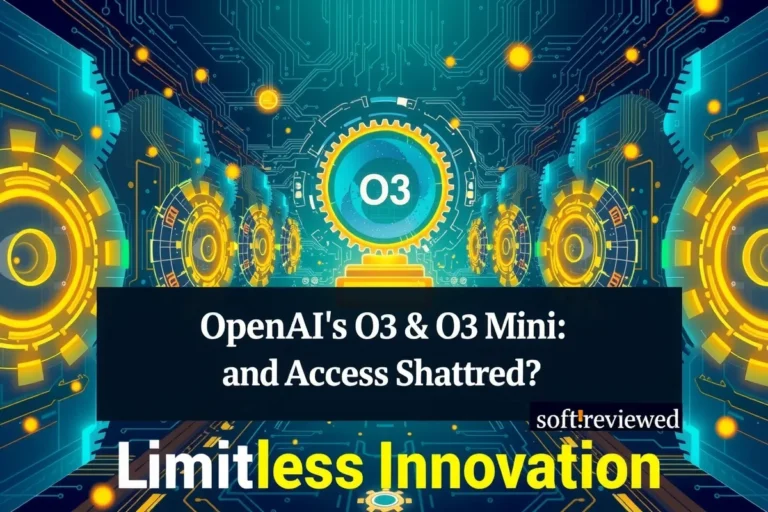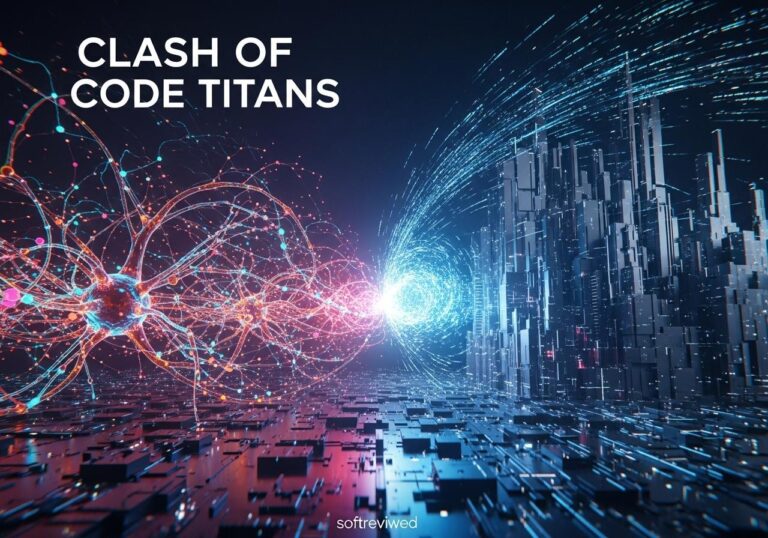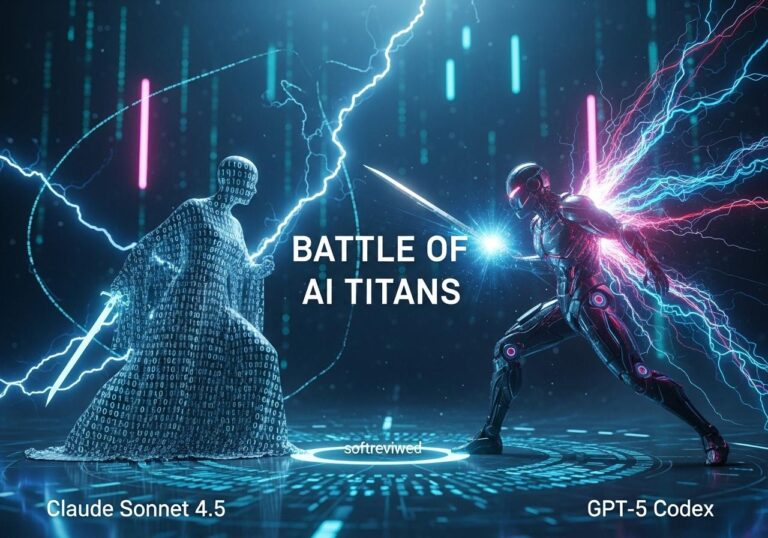🤖 O3 Model Performance Breakthroughs
Revolutionary advances in AI capabilities across multiple domains
📊 Performance Metrics
• SWE Bench: 71.7% accuracy (20% higher than o1)
• Competition Code: ELO 2727 (175th ranked human level)
• Competition Math: 96.7% accuracy
• PhD Science: 87.7% accuracy
• Frontier Math: 25.2% accuracy
🎯 ARC-AGI Achievement
Scored 87.5% on ARC-AGI Semi-Private Evaluation Set, exceeding the 85% human benchmark
⚡ O3 Mini Features
Optimized for coding with adjustable compute settings (low, medium, high) for flexible performance and cost efficiency
🚀 Public Release
Currently in testing phase with researchers, full release expected by end of January
🏆 Historic Achievement
Breakthrough in generalized intelligence, demonstrating novel problem-solving abilities beyond pattern recognition
👥 Human Comparison
• Matches top competitive coders
• Exceeds human performance in specific math benchmarks
• Surpasses human baseline in generalized intelligence tests
OpenAI has recently unveiled its next generation of reasoning models: O3 and its more streamlined counterpart, O3 Mini. These models aren’t just incremental updates; they represent a significant leap in AI capabilities, especially in complex reasoning, coding, and mathematical problem-solving. This article dives into the groundbreaking benchmarks achieved by O3 and O3 Mini, and provides details about early access and what you can expect. The buzz around the O3 release is palpable, with the AI community eager to see what these models can truly do.
Benchmark Performance: O3 and O3 Mini vs. O1 📈
The true measure of an AI model’s advancement lies in its performance on standardized benchmarks. The following table highlights key results for the O1, O3 and O3 Mini models:
| Benchmark | O1 | O3 (High Compute) | O3 (Low Compute) | O3 Mini |
|---|---|---|---|---|
| ARC-AGI | 5% | 87.5% | 75.7% | ~ 40% |
| EpochAI Frontier Math | ~2% | 25.2% | — | ~10% |
| AIME Math Competition | 83.3% | 96.7% | — | ~90% |
| GPQA Diamond Science | 78% | 87.7% | — | ~ 85% |
| SWE-bench Verified Software Engineering | 48.9% | 71.7% | — | ~60% |
| Codeforces ELO Rating | 1891 | 2727 | — | ~2300 |
Note: The O3 (low-compute) and O3 Mini do not have official scores for certain benchmarks yet. The values provided are estimated based on performance data and reported trends.
As you can see, the O3 and O3 Mini models have shown a substantial increase across all benchmarks. The O3 model’s scores are particularly noteworthy on the ARC-AGI test, highlighting a significant improvement in its ability to generalize and adapt to new problems. The model is far superior at math, programming, and scientific reasoning tasks.
Delving Deeper into the Results 🤔
Looking at the benchmarks, here’s what stands out:
ARC-AGI: The O3 models show a phenomenal leap in this benchmark. With a score of 87.5% in high-compute mode, O3 moves past the benchmark for human level performance, demonstrating its ability to approach truly AGI-level tasks. The O1 score was only 5%, showcasing the significant advancements in the new model. The O3 (low-compute) version also achieves an impressive 75.7% at a lower cost, and O3 Mini performs well given its cost constraints.
Math: The O3 model’s score of 25.2% on the EpochAI Frontier Math benchmark is particularly remarkable as previous models barely scored above 2%. This result highlights a huge leap in the ability of the models to handle advanced mathematical reasoning. The O3 models also scored incredibly well on AIME and GPQA Diamond Science tests.
Coding: In competitive programming and software engineering tasks, O3 also shows remarkable improvement, exceeding previous models. This demonstrates enhanced capabilities in software creation, problem solving, debugging and optimization, showcasing a very strong potential for real-world applications.
Accessibility and Access to the New Models

OpenAI is taking a careful and phased approach to the rollout of the O3 and O3 Mini models. Here’s a breakdown of the current situation:
✅ Safety Testing: Early access to these models was first provided to safety researchers. Applications were open from December 20th, 2024 until January 10th, 2025, allowing for meticulous safety and security testing. This was a very limited release with the goal of improving the overall safety of the models.
✅ O3 Mini Public Release: The O3 Mini model is scheduled for public release by the end of January 2025. This will offer broader access to advanced reasoning capabilities at a more affordable price point. It is expected to be released for use via a ChatGPT Plus subscription, similar to the way GPT-4o was initially released.
✅ O3 Full Release: The full O3 model is expected to follow shortly after the O3 Mini public release, with an as-yet unannounced date. Similar to O3 Mini, it is expected to have an initial rollout with a paid access tier before a more general release.
✅ No Direct API Access Initially: It is expected that neither the O3 nor the O3 Mini model will be made available via direct API at the initial launch. This means the models may be accessed through a chatbot format for the time being, similar to other OpenAI products.
Cost Implications: Understanding the Pricing ⛔
The O3 model’s advanced reasoning capabilities come at a higher cost compared to previous models. The following points help outline the expected cost:
High Compute Cost: O3’s high-compute mode can be expensive, with estimated costs exceeding $1,000 per task on the ARC-AGI benchmark.
Lower Compute Cost: The O3’s low-compute option runs between
- O3 Mini Cost: The O3 Mini is designed to be more cost-effective, making it more accessible for broader applications while still maintaining strong reasoning skills. Exact pricing details are not yet public, but it’s expected to be lower than the full O3 model but higher than the current GPT-4o model.
The high cost of the full O3 model may limit its use to high-value applications in th
The Impact on the AI Landscape ➡️
The performance of O3 and O3 Mini has already caused quite a stir in the AI community. Their advancements in reasoning, problem-solving, and coding capabilities are game-changing, pushing the boundaries of what we thought was possible. Here’s a glimpse into the potential impact:
✅ Accelerated AI Development: O3’s advanced capabilities are likely to significantly accelerate AI research and development, especially in areas such as mathematics, science, and coding.
✅ Enhanced Productivity: By automating complex tasks, these models can lead to higher efficiency and productivity across various industries, from software development to financial modeling.
✅ New Opportunities: The enhanced reasoning capabilities open doors to new applications and solutions in areas previously inaccessible to AI.
✅ Safety Advancements: The “deliberative alignment” technique used in O3 improves the model’s safety profile and minimizes the risk of harmful behavior.
How Does OpenAI’s O3 & O3 Mini Compare to Nvidia’s Jetson Orin Nano for Edge AI Applications?
OpenAI’s O3 and O3 Mini showcase impressive capabilities for edge AI applications, emphasizing energy efficiency and performance. In comparison, the nvidia jetson orin nano edge ai platform excels in GPU power and optimized deep learning tasks. Depending on use case requirements, either option presents unique advantages for developers in the AI landscape.
Wrapping Up: A New Chapter in AI
OpenAI’s O3 and O3 Mini models represent a pivotal moment in AI development, setting new standards for reasoning, coding, and mathematical capabilities. The impressive benchmark results, coupled with the focus on safety, are setting the stage for the next phase of AI evolution. While the full potential of these models remains to be seen, their imminent arrival promises to bring about substantial changes in the AI space and beyond, and signals that we are pushing closer to models with true Artificial General Intelligence (AGI).
Keep an eye on the official OpenAI website for the latest updates and official release information. You can explore more about the models in the OpenAI documentation.
OpenAI O3 Performance Metrics
Comparison of OpenAI O3’s performance across various benchmarks, showing significant improvements over previous models.







